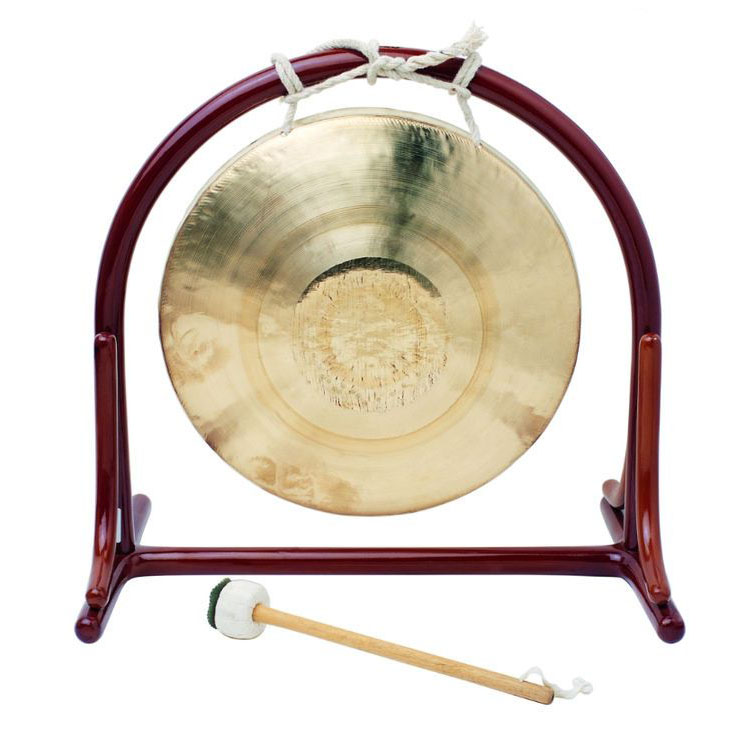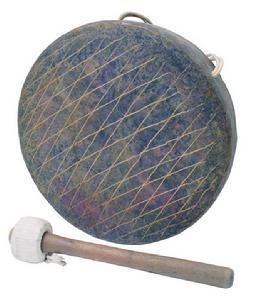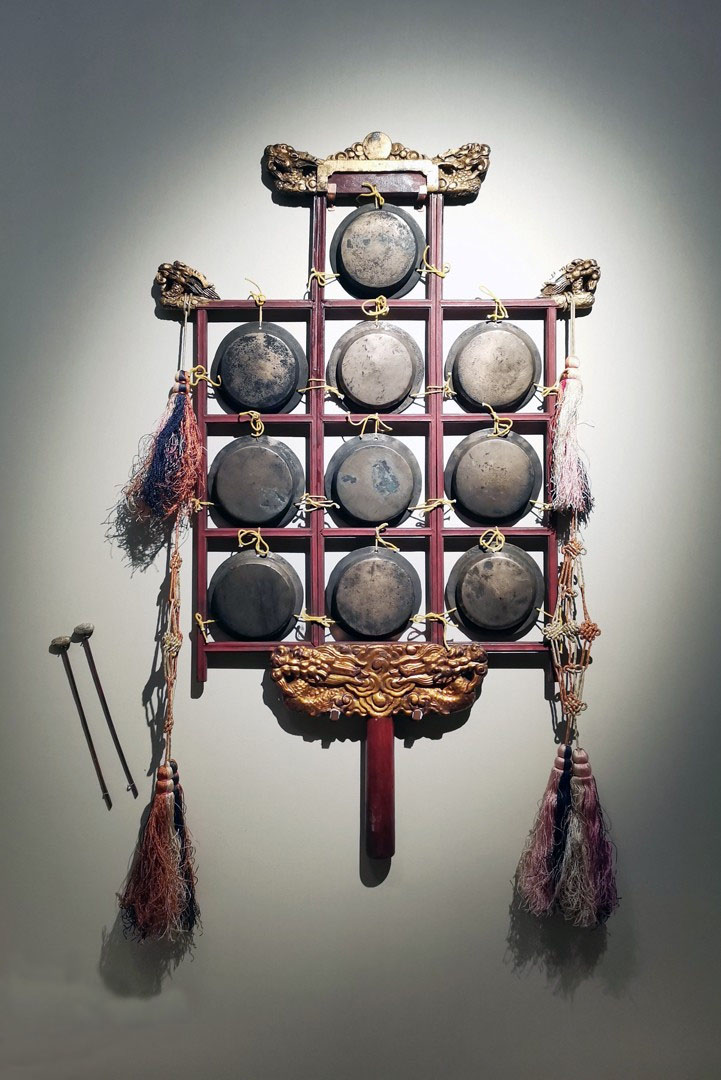components of a gong
381 views · Organized by 默妍 on 2022-02-07
The gong consists of three parts: gong body, gong frame (gong rope) and gong hammer. The gong body is made of bronze, because it is made of "sounding copper", so it is also called "sounding device". The structure is relatively simple. The gong body is in the shape of a disc, and the surrounding is fixed by its own frame. The central part of the gong is tapped to vibrate and sound.
Generally, the central part is slightly convex, called umbilicus, light or hall, which is the main part of pronunciation. The size of the umbilicus, the ratio of thickness and the area of the gong, determines the level of the tone. These all constitute the main features of the gong. The area between the gong navel and the gong side is called the gong face, "two positions" or "inner and outer eight characters". Two gong holes are drilled on one side of the gong side to wear the gong rope, which is convenient for carrying or hanging the gong stand.
For a long time, through the continuous and careful creation of people of all ethnic groups, due to the different regions and occasions of application, a wide variety of gongs with different colors have been formed in China. According to the shape characteristics, it can be divided into three types: flat type gongs, umbilical type gongs and milk type gongs; according to the pronunciation level, it can be divided into three types: bass gongs, alto gongs and high pitch gongs; according to the performance form, it can be divided into single-sided gongs and combination gongs. Two types of gongs.
Among these gongs, the small ones are only a few centimeters in diameter, and the large ones are more than one meter five in diameter. Not only are they different in shape, but their timbres and effects also have their own characteristics.
Since the 1960s, this combination gong has developed rapidly, and new varieties such as set, row, weave, qin, twenty-nine-tone cloud gong, thirty-six-tone and thirty-eight-tone cloud gong have appeared.

Generally, the central part is slightly convex, called umbilicus, light or hall, which is the main part of pronunciation. The size of the umbilicus, the ratio of thickness and the area of the gong, determines the level of the tone. These all constitute the main features of the gong. The area between the gong navel and the gong side is called the gong face, "two positions" or "inner and outer eight characters". Two gong holes are drilled on one side of the gong side to wear the gong rope, which is convenient for carrying or hanging the gong stand.

For a long time, through the continuous and careful creation of people of all ethnic groups, due to the different regions and occasions of application, a wide variety of gongs with different colors have been formed in China. According to the shape characteristics, it can be divided into three types: flat type gongs, umbilical type gongs and milk type gongs; according to the pronunciation level, it can be divided into three types: bass gongs, alto gongs and high pitch gongs; according to the performance form, it can be divided into single-sided gongs and combination gongs. Two types of gongs.

Among these gongs, the small ones are only a few centimeters in diameter, and the large ones are more than one meter five in diameter. Not only are they different in shape, but their timbres and effects also have their own characteristics.
Since the 1960s, this combination gong has developed rapidly, and new varieties such as set, row, weave, qin, twenty-nine-tone cloud gong, thirty-six-tone and thirty-eight-tone cloud gong have appeared.
Involving musical instruments
The gong is a traditional percussion instrument, also known as the gong because it is made of copper. Different places have different gongs. Wooden gongs, leather gongs, sieve gongs, earth gongs and gongs are all made of copper.
Guess you like
Organized by CT. on 2022-05-06
Instruments required for the Suona Band: Drums, Xiao, Erhu, Pipa, Cymbals, Gongs, Bamboo Flute, etc.
read >>
Organized by 长乐 on 2022-02-07
Chinese percussion instruments are classified into metal, bamboo and other three types according to different materials. Gongs are metal percussion instruments. The gong is made of copper smelting. Its structure is relatively simple. The gong body is a circular arc, and the surrounding is fixed by the frame of the gong body. And pronunciation.
read >>
 渝公网安备 50010702504639号
渝公网安备 50010702504639号